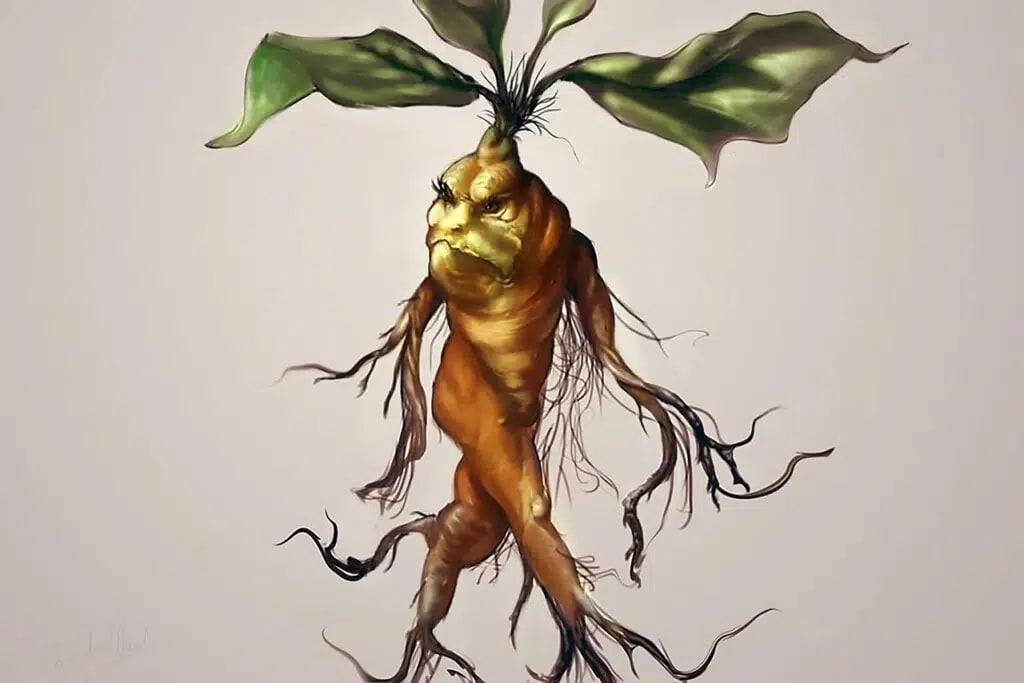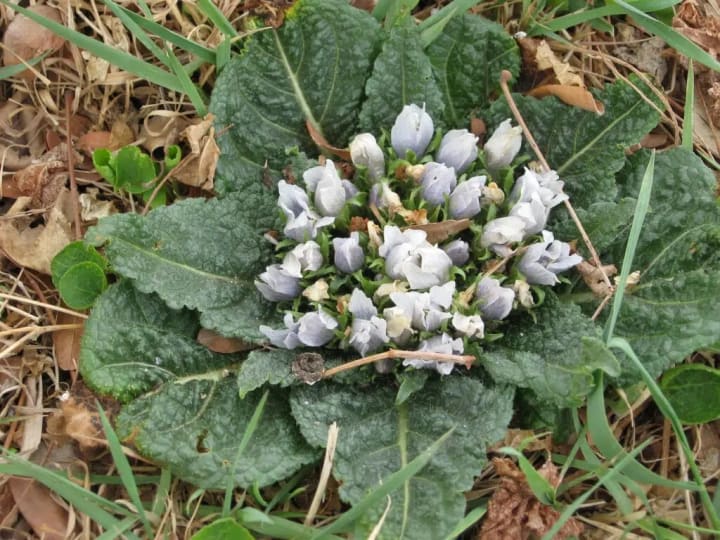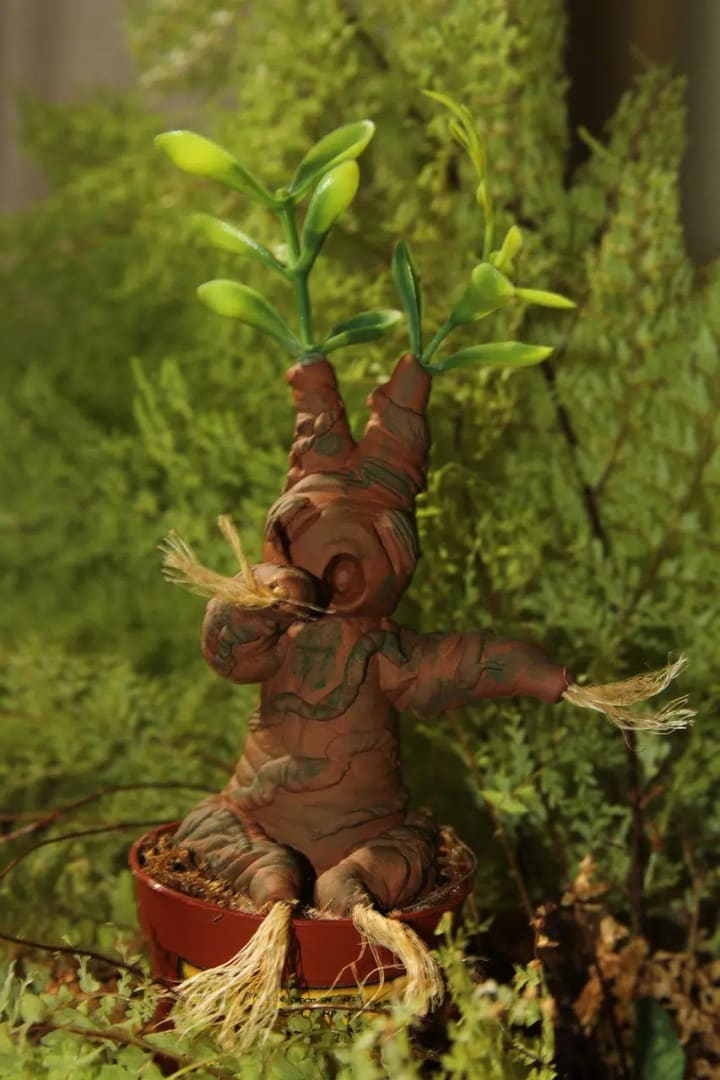Mandragora, the hallucinogenic "magical" plant
What effects does it have?

Like edible plants such as spinach and borage, the mandrake is a wild plant and similar to those mentioned, but it is highly toxic . It causes abdominal pain, vomiting, tachycardia, and hallucinations. In the most serious cases of poisoning it can also lead to coma and have lethal outcomes.
The mandrake ( Mandragora officinarum ) is a plant belonging to the Solanaceae family. Due to its toxic and hallucinogenic properties, accompanied by the curious shape of the typically anthropomorphic root in spring, in the past it was considered "magical" and endowed with supernatural powers in many popular traditions. In Italy the mandrake (also known as mandrake) grows spontaneously. For non-experts, it can easily be confused with edible plants such as borage and spinach, with which it shares similarities in appearance. It is no coincidence that he ended up in several cases due to poisoning.
What is madragora
The mandrake, a plant belonging to the group of dicotyledonous angiosperms, flowers in autumn and presents characteristic pale blue flowers. The leaves, small and with barely perceptible fluff, are elongated and tend to be oval in shape. Its fruits, fleshy berries, are yellowish in color. However, the distinctive feature is the root, typically forked, which in certain specimens and especially in the spring period presents anthropomorphic evidence. This detail, associated with its properties, has made it the "witches' favorite" plant, ending up at the center of numerous esoteric rites and many other popular beliefs.
Why is it poisonous?
Like other plants belonging to the Solanaceae family, the mandrake is rich in alkaloids that make it poisonous and inedible. Among the toxic substances present in the plant we find atropine, scopolamine and hyoscyamine, which, however, in adequate concentrations also have medicinal properties. It is no coincidence that the same mandrake in ancient times was used as a powerful analgesic, as well as to facilitate sleep and sexual vigor (it was associated with aphrodisiac powers). Actually, the properties of the active principles are mainly narcotic, analgesic and sedative. However, excessive toxicity prevents its use in phytotherapy, although expert homeopaths can develop mandrake-based dilutions.
Pain and hallucinations: what happens?
The toxicity is not the same in all parts of the plant and the greatest is found in its peculiar root. The effects, which can also lead to coma and death in severe poisoning, are generally gastrointestinal pain, tachycardia, vomiting, arterial hypertension, and convulsions . If toxic doses exceed a certain threshold, hallucinations, amnesia, and sexual arousal (hence the 'aphrodisiac' power) can occur, similar to various drugs. Hallucinations can be both visual and auditory and are accompanied by severe stomach cramps.

Poisoning News
The mandrake has ended up in the center of several news cases because it is exchanged with edible plants such as borage, also spontaneous, and spinach. The reason lies in the similarity between the plants, which however have some differences in the eyes of an expert (for example, the shape of the leaves and the amount of fluff). This is the case, for example, of a family that ended up in the hospital after consuming frozen vegetables. It is possible that the mandrake grew spontaneously in the field and was harvested, killing off the spinach.
Mythology
In Greek culture there is a certain relationship between the mandrake, the dog and the goddess Hecate. The reign of this dark deity of the underworld is precisely identified with cemeteries. A group of folk and mythological tales present in European, Arabic, and Asian cultures can be traced back to a different original myth. From these stories a theme arises located in the time of the origins of man, in which man himself originates from the mandrake , exploiting the root anthropomorphic image.
In the stories we can read how "the first men would have been a family of gigantic sensitive mandrakes that the sun would have animated and that, alone, would have detached from the earth" . Or, that «man originally appeared on earth in the form of monstrous mandrakes, animated by an instinctive life, and that the breath of the Most High forced, transmuted, mistreated and finally uprooted them, to convert them into beings endowed with thought and their own movements. . […] From this we could deduce that the mandrake is linked to a myth of the origin of man”.
Although it is not a myth of the origin of the mandrake, it is interesting to note how, in these cosmogonies, it is believed that the origin of the plant is older than that of man.
As we can see, no real and well-structured myth about the origin of the mandrake has survived. Only a few isolated traces, which have been altered each time, have found some success in popular belief and fables. The fact is that this poisonous plant was considered primordial and it is not yet known if it arose before or at the beginning of humanity.

Other beliefs
The large root and the fruits were the parts of the plant that were used for medicinal and psychoactive effects. Since ancient times, the root shape has been used to recognize the features of a man or a woman. This anthropomorphic identification has been a source of inspiration in the mythology, beliefs and rituals related to this plant.
Various sources from medieval times report the belief that, when a person sentenced to death is hanged, at the moment he dies, his seminal fluid or urine, falling to the ground, gives rise to the mandrake . This topic is usually followed by a description of the procedure for harvesting the plant. It was believed, in fact, that anyone who tried to eradicate it, but also anyone who accidentally stumbled upon it or passed too close to it, would die. The belief also says that if a dog that is black or practically black is tied, either by the tail or by the neck, to the root of the plant, it will pull it out and even if the dog is sacrificed, the plant can then be used. .
This is a very widespread tale in the Germanic countries, in Iceland, in France and in other places. It is probable that the theme of the birth of the mandrake from the drops of sperm or from the urine of a hanged man was part of an original myth of the plant. The hanged man, a person sentenced to death for serious crimes, or for robbery, but innocent, (as specified in various sources) would therefore have been a determined man, likely the protagonist of the original story.
In the transformation of the myth into a popular belief, the reason for the unjust condemnation disappears and the analogy refers to everyone who has been hanged.
Mandrake and its relationship with death
The relationship between the mandrake and death is present in other beliefs. Often the presence of the plant is associated with the places where corpses are buried, such as the surroundings of cemeteries.
The mandrake has also been identified with Homer's enigmatic herb molybdenum . In the story, inserted in the tenth book of the Odyssey, it is the god Hermes, the "messenger of the gods", who delivers the magic herb to Ulysses. The objective was to use it as protection against the filter of the sorceress Circe, capable of transforming men into pigs. In the story, the molybdenum herb performs an opposite action to that of classic magical herbs: it prevents transformation into an animal, instead of inducing it.
Literature
The mandrake is also known in Jewish culture and is present in the Old Testament. It is mentioned in a story with rather "pagan" connotations, in which the plant is used as a medium of exchange for its aphrodisiac and fertilizing properties . In fact, this plant has been considered, almost everywhere, as a wonderful aphrodisiac. Not surprisingly, Aphrodite, the Greek goddess of love, had the nickname of Mandragoritis .
Legends and Harry Potter
The best-known legend linked to the mandrake is that of the 'murderer' cry from its root when it is uprooted, and it is linked precisely to its anthropomorphic form. In order to pick it up safely, according to popular tradition also cited by Machiavelli, the plant must be tied to a dog to pull it out. This procedure would condemn the animal, but it would guarantee the collection in 'safety'. The cry of the mandrake was also the protagonist in the Harry Potter fantasy saga, in the chapter Harry Potter and the Chamber of Secrets.
About the Creator
Míriam Guasch
Hello, I'm Miriam! Enthusiastic pharmacist passionate about well-being, vegan food, nature, animal lover, avid traveler, ecologist. Excited to learn and share!






Comments
There are no comments for this story
Be the first to respond and start the conversation.